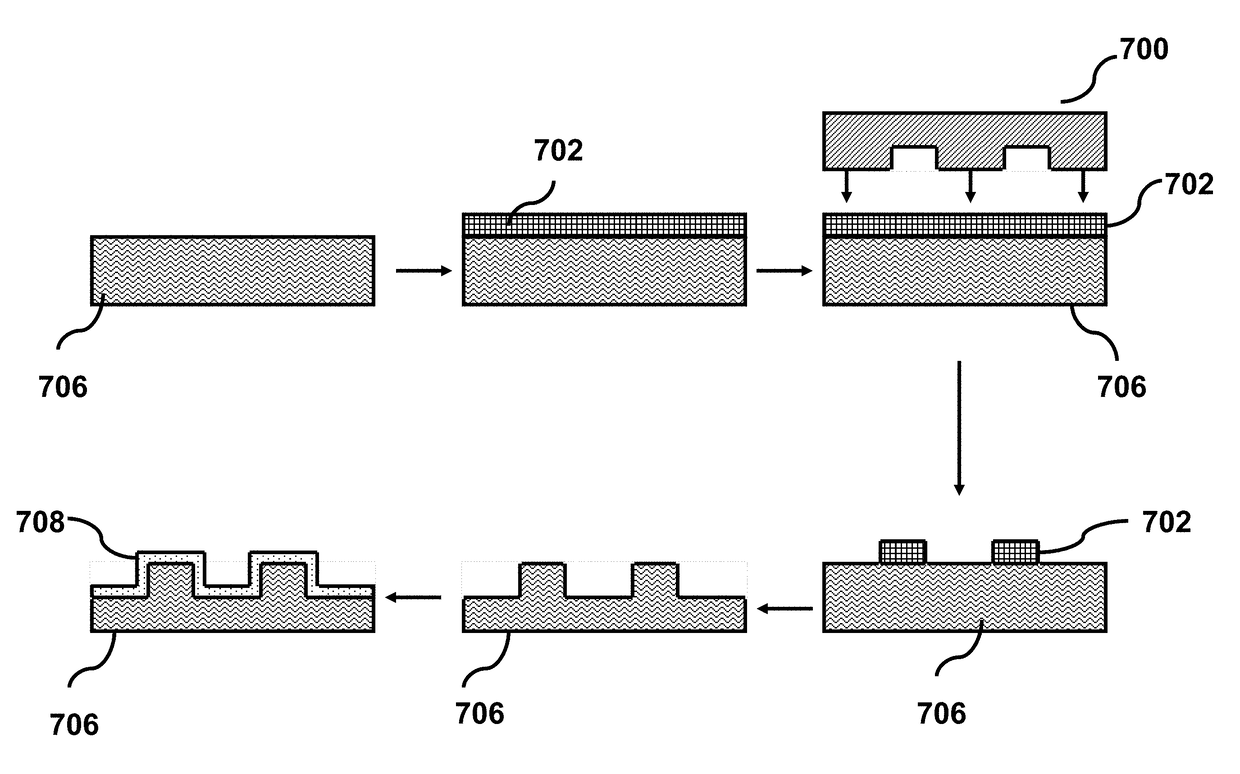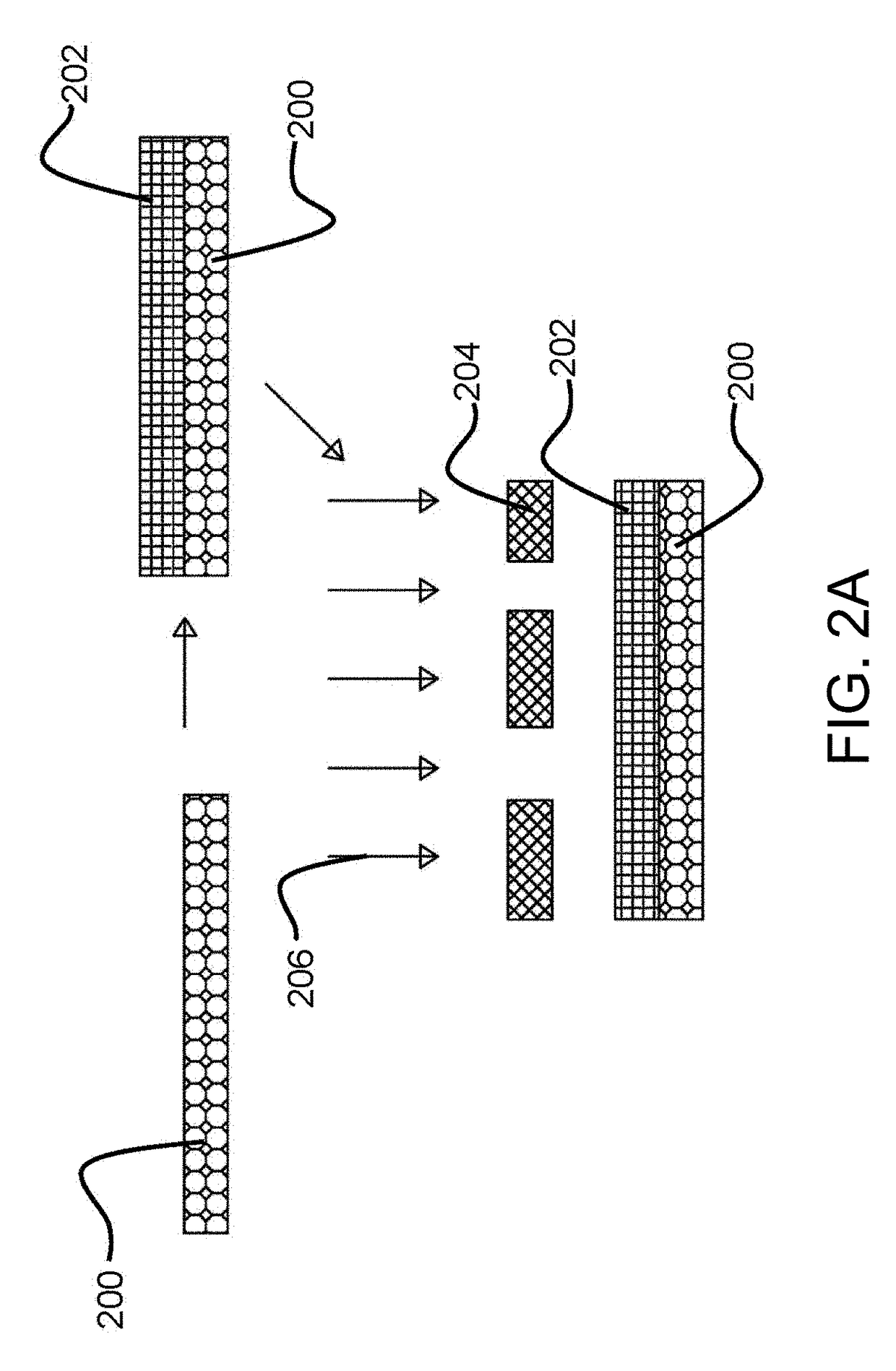Process for creating high efficiency photovoltaic cells
a photovoltaic cell, high-efficiency technology, applied in the direction of basic electric elements, electrical apparatus, semiconductor devices, etc., can solve the problems of reducing the conversion efficiency, the toxic nature of si-solar cells is of great concern for the environment, and the si-solar cell is not yet widely accepted as an alternative source of energy
- Summary
- Abstract
- Description
- Claims
- Application Information
AI Technical Summary
Benefits of technology
Problems solved by technology
Method used
Image
Examples
Embodiment Construction
[0039]The following described process is a manufacturing sequence that results in a solar cell with a patterned structure designed to self intensify the light that is incident on the surface of the cell. These shapes are myriad and depend on the incident light to be captured and how it alters its angle with respect to the surface. Some examples of suitable shapes are a trapezoidal pyramid, a pyramid, and a cylinder. These shapes are given as examples and are not to be considered limiting of the type of structures that can be made. There are several processes that produce several structures with the same intensifying effects. These processes are described in detail in the following paragraphs.
[0040]Each process requires the construction of a mold that imprints the pattern on the final surface. According to our invention, the mold is made from one of two processes. One method involves creating a plug or buck that is shaped like the desired pattern, and then the final mold is created f...
PUM
 Login to View More
Login to View More Abstract
Description
Claims
Application Information
 Login to View More
Login to View More - R&D
- Intellectual Property
- Life Sciences
- Materials
- Tech Scout
- Unparalleled Data Quality
- Higher Quality Content
- 60% Fewer Hallucinations
Browse by: Latest US Patents, China's latest patents, Technical Efficacy Thesaurus, Application Domain, Technology Topic, Popular Technical Reports.
© 2025 PatSnap. All rights reserved.Legal|Privacy policy|Modern Slavery Act Transparency Statement|Sitemap|About US| Contact US: help@patsnap.com



